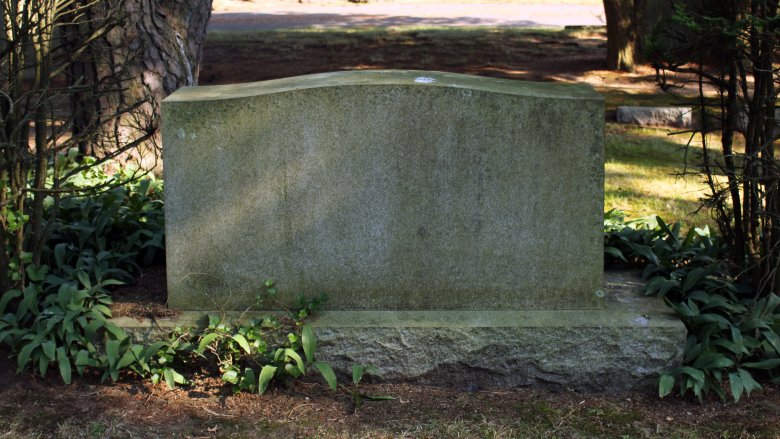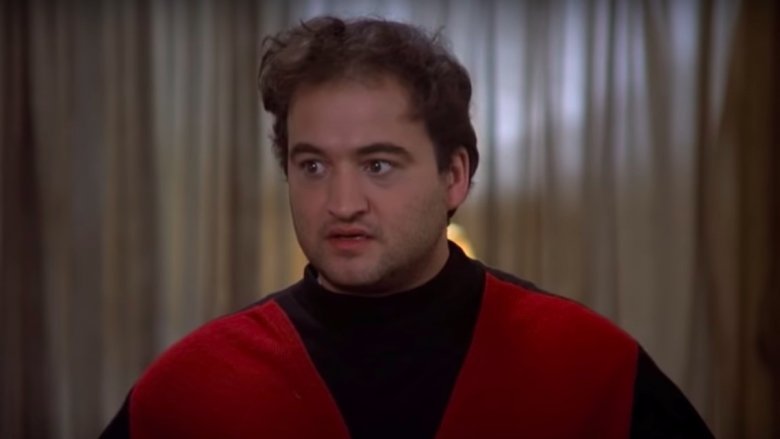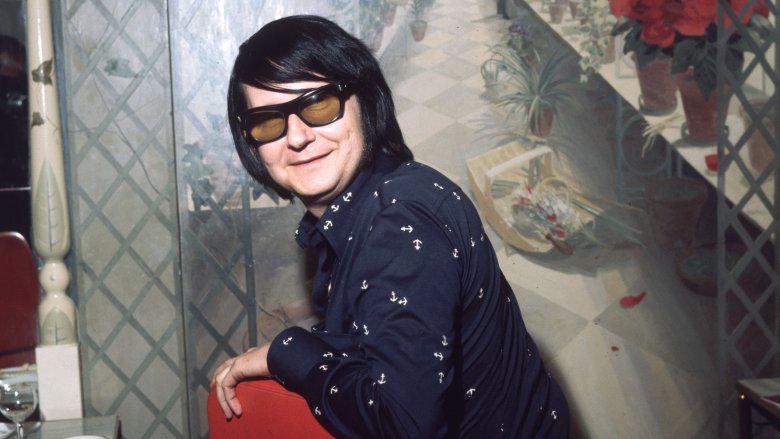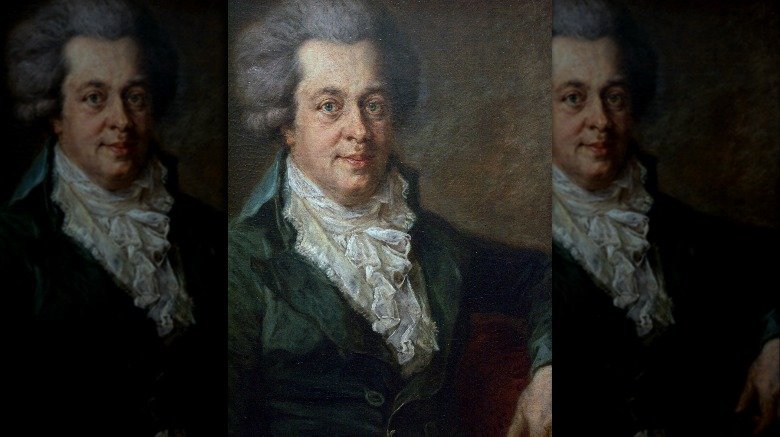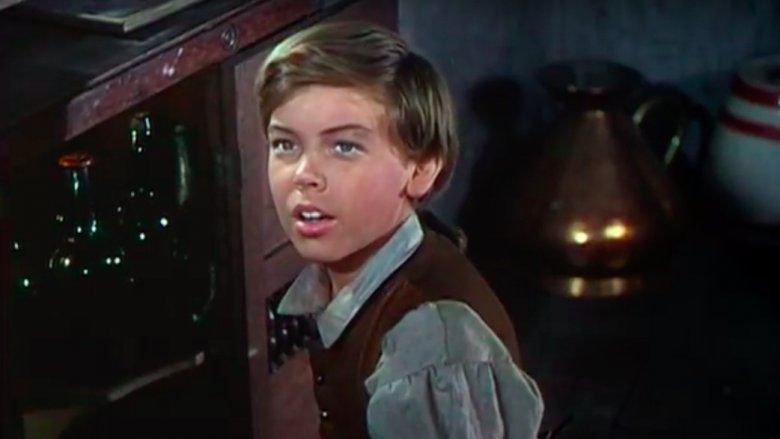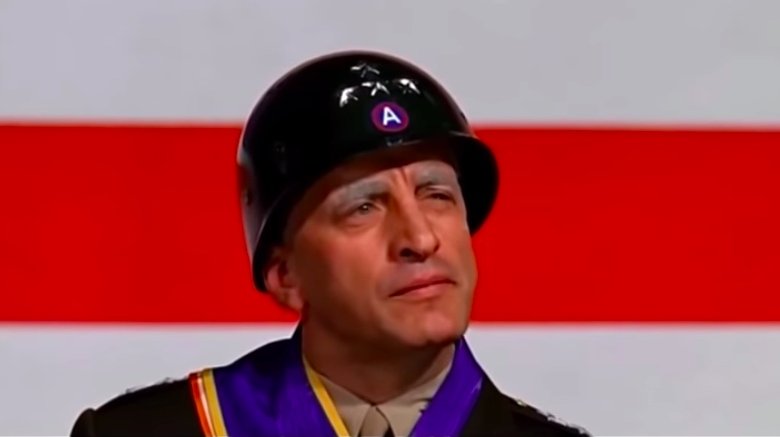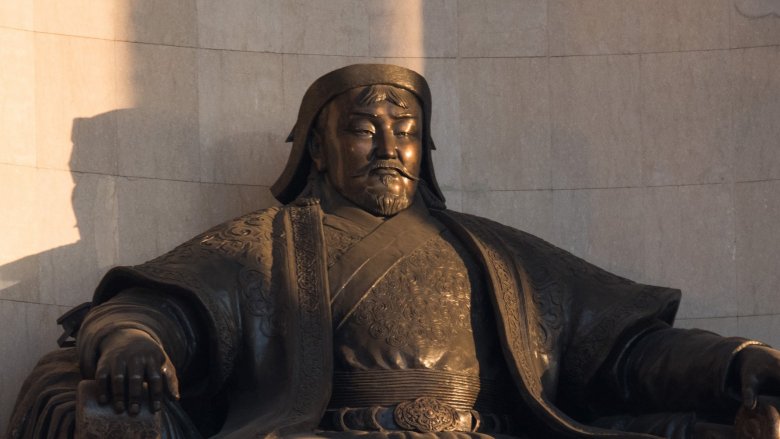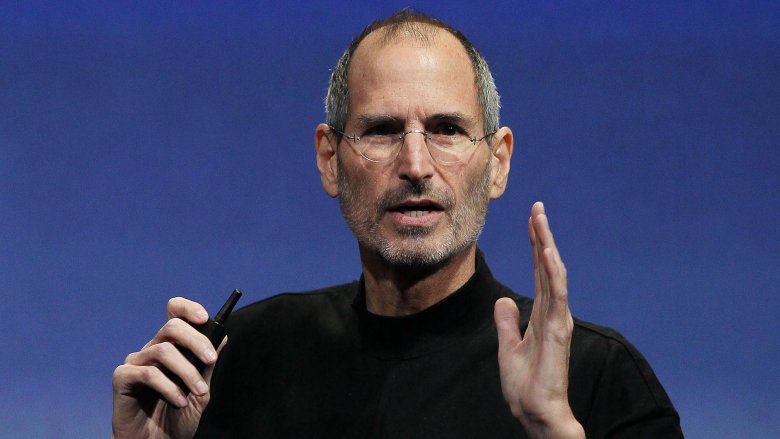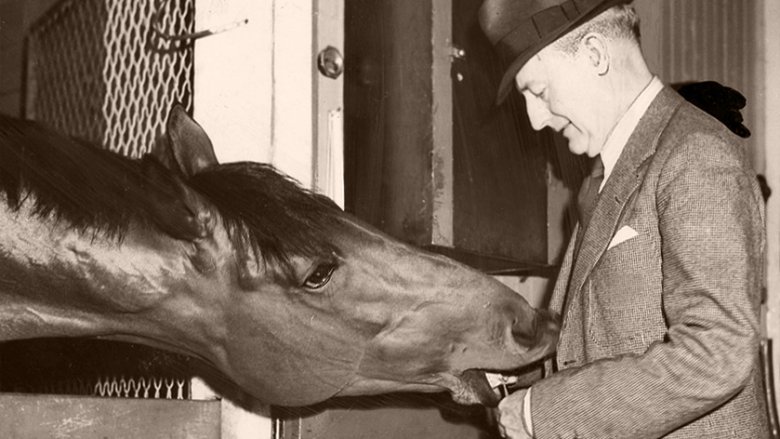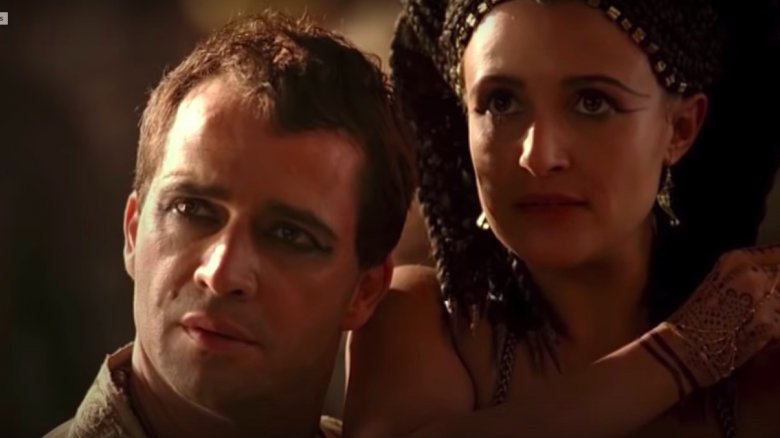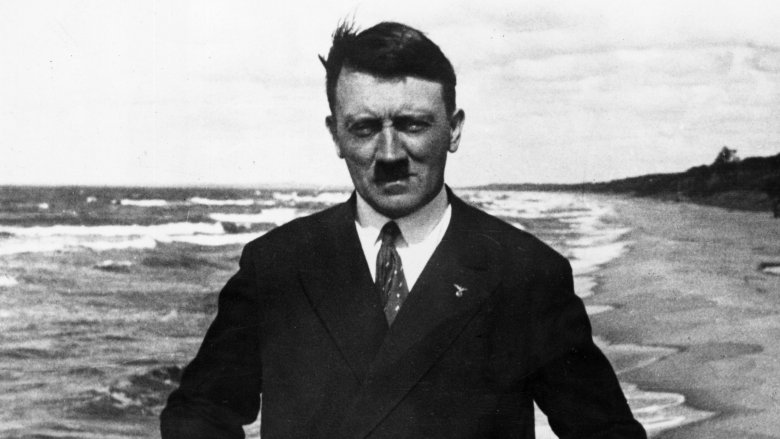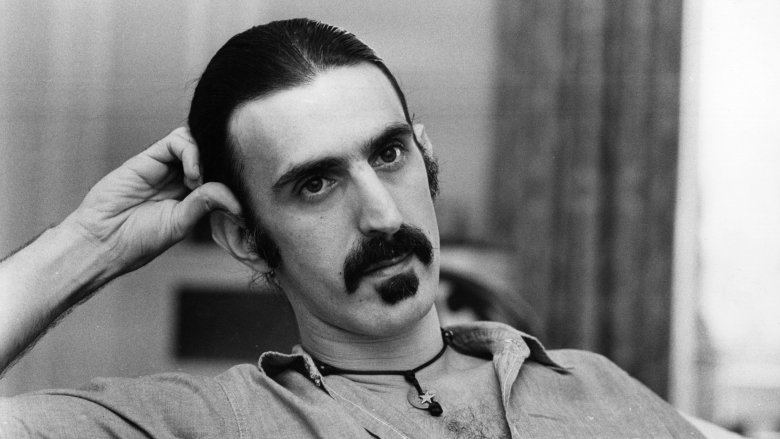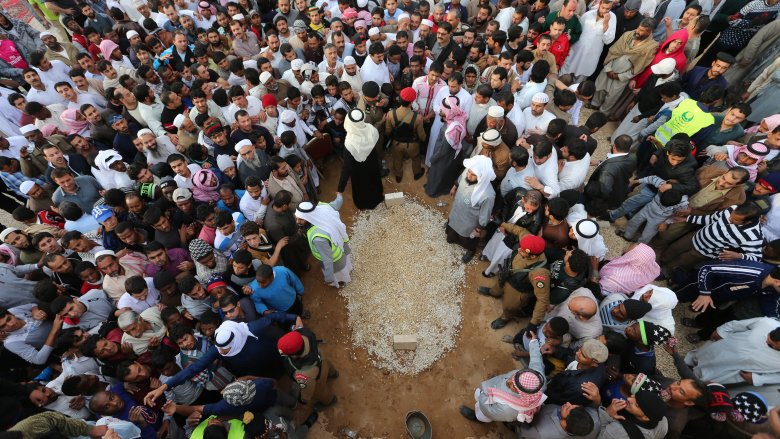Famous People Who Are Buried In Unmarked Graves
Everyone craves privacy, except maybe for Kim Kardashian and most YouTubers. Celebrities have it a lot harder than us ordinary folk, though. It's hard to find privacy when you're famous because everyone wants a look at you. For some celebrities, it sometimes gets bad enough that the desire for privacy ends up extending beyond this life and into the next. Not only are some celebrities desperate to avoid the paparazzi in life, they don't want the paparazzi hanging around their graves, either. And really, who can blame them? Just trying to eternally rest down here, people.
But that's not the only reason a celebrity or other famous person might be buried in an unmarked grave — celebrities who fall on hard times sometimes end up in anonymous graves, or relatives just don't get around to the whole buying-a-headstone thing. Whatever the reason, you may be surprised that these particular famous people are buried in unmarked, and occasionally even totally unknown graves.
Don't party on my grave, please
John Belushi was one of the very first Saturday Night Live cast members and was best known for his roles in The Blues Brothers and Animal House. But he was probably most famous for his hard-partying ways, which is actually not really an awesome thing to be remembered for. That legacy followed him to the grave, and his tombstone became kind of a magnet for other hard-partiers, who evidently were bummed they couldn't go drinking with Belushi in life so figured drinking at his headstone was the next best thing.
According to UPI, it got bad enough that cemetery officials started to worry that nearby gravestones might be damaged by raucous mourners, so the family decided to move Belushi to "a remote corner of a small hillside cemetery." This is where it gets kind of weird, though. There's a headstone, but local legend says Belushi isn't actually under it. That's actually quite plausible, really, since it's hard to imagine anyone being okay knowing that their loved one's eternal rest is constantly being interrupted by a bunch of drunk college louts who aren't even the drunk college louts he would have chosen to hang out with in life. Supposedly, Belushi's remains are in the same cemetery as the fake headstone, but only his own people know exactly where.
Buy milk, walk the dog, order tombstone
The New York Times called Roy Orbison "one of rock's most gifted singers." He was the voice behind "Oh, Pretty Woman" and "Running Scared," and he had a somewhat unusual death for a celebrity — a basic heart attack. Compare that to, you know, drug overdoses, murders, car crashes, or autoerotic asphyxiations, which are some of the more popular ways for celebrities to go. Still, he died relatively young at the age of 52, and he had good things on the horizon, too, including his comeback with the Traveling Wilburys, which also included stars Bob Dylan, Tom Petty, Jeff Lynne, and George Harrison.
So it's not really that surprising to hear that Orbison's grief-stricken family just couldn't face those end-of-life responsibilities. The singer was "temporarily" interred in the same small suburban cemetery where Marilyn Monroe is buried and because they thought they might someday move the grave, the family never bothered to buy a headstone. Then as time went on a marker just sort of slipped off the to-do list. "It's definitely not intentional," Orbison's youngest son, Alex, told Reuters. "It's not like we don't want people going by there or whatever. It's been put to the back burner for so long."
Oops, we misplaced Mozart
Unmarked graves seem like sort of a strange thing to modern people, but a few hundred years ago they were common — and not just for people who didn't have the means to buy headstones, either. According to ThoughtCo, one of the great untruths about the life of Mozart was that he died penniless and was buried in a pauper's grave, but that story is based mostly on the way he was buried, which was in a shared plot under a simple wooden marker. But Mozart's burial was simple not because he was poor but because that's the way people did things in those days.
Another common practice was digging up the graves of the dead, which seems pretty weird and creepy, but it was done for practical reasons. Cemetery space was limited, so your gravesite was not yours forever. Effectively, you were just renting it for a few years, and when your lease was up someone would dig up your bones, maybe jumble them up a bit to make them nice and compact, and then rebury them in a smaller plot. So after that happened to Mozart's bones, people sort of lost track of where he ended up.
You can visit Mozart's headstone — it's in the St. Marx cemetery in Vienna. But it probably doesn't mark the famous composer's actual gravesite because there are no surviving records that might give away the true location.
Don't let your gravestone hit you on your way down
Disneyland is the happiest place on Earth, and Disney movies are the happiest movies on Earth, except for High School Musical because High School Musical sucked, and Mars Needs Moms because what? Anyway the world loves the adorable child stars of Disney movies, but as far as Disney is concerned, it's all just business. Or at least that's the way it was the 1950s when they terminated 16-year-old Peter Pan star Bobby Driscoll three years before the end of his contract and sent him off to Neverland, but the one where he would never get a decent role again, not the cool Neverland.
Driscoll was devastated, so he did what a lot of kids from privileged backgrounds do when things go badly: He turned to drugs. By the age of 17 he was doing heroin, and it was pretty much all downhill from there. His addiction drove him to commit crimes, and by March 1968 he'd died alone in New York from hardened arteries, a common long-term effect of heroin addiction. Two kids found his body in an abandoned Greenwich Village tenement, but no one came forward to identify him, so he was buried in an unmarked grave on Hart Island.
A 1972 article in Movie Digest said Driscoll's parents didn't learn of his death until a year and a half later, when police were finally able to identify him through fingerprints they had taken.
You can keep your dumb Oscar and don't come to my grave, either
George C. Scott won a best actor Academy Award for his role as General George C. Patton in Patton, but he didn't actually attend the ceremony. Instead, he stayed home to watch a hockey game.
According to Roger Ebert, Scott thought the Oscars were a "meat market — barbaric and innately corrupt." He even telegraphed the Academy to refuse the nomination, but they declined to take his name off the shortlist. After such a display of disdain, no one thought he'd actually win — in fact, it was such a shock that Oscar presenter Goldie Hawn gasped when she opened the envelope and read his name.
No one really knows for sure why Scott's grave is unmarked, but if you had to guess, you could do worse than concluding that it had something to do with his inherent dislike of the Hollywood machine. Scott died in 1999 from a ruptured abdominal aortic aneurysm. He was 71. His grave is at the Pierce Bros Westwood Village Memorial Park in Westwood, California, just next door to Walter Matthau.
Who needs curses when you can just kill everyone in advance?
It's hard to say for sure, but it's probably kind of likely that Genghis Khan had a pretty large ego. The dude fathered hundreds of children, after all, and he conquered roughly one-third of Asia, which doesn't tend to be something introverts do.
But for some reason, Genghis Khan was really concerned that someone might find out where he was buried, so evidently his ego did not crave crowds of devastated mourners showering his gravesite with flowers and teddy bears. According to the Washington Post, he was so concerned about post-mortem privacy that the soldiers who oversaw his burial killed everyone who witnessed the funeral procession. Then, they killed the people who built the tomb, which served the dual purpose of protecting the secret and avoiding expensive funeral costs. Finally, they killed themselves, which pretty much ensured that Khan would remain undisturbed, at least for a few hundred years.
It does seem pretty likely that someone like Khan would have chosen burial in an elaborate tomb surrounded by cool stuff, so there's a pretty good chance that the archaeologist who eventually discovers the tomb will know exactly the significance of the find. And that may happen sooner than you think — modern satellite technology actually has the ability to analyze vast swaths of land for anomalies consistent with ancient burial sites. So really, it seems like only a matter of time before the great conqueror's secret is no longer a secret.
Hey Siri, where is Steve Jobs buried?
Some famous people crave the spotlight, and some famous people are like, "That spotlight is way too bright, shut it off please." Steve Jobs was one of the latter. The spotlight was kind of a necessary part of the Apple founder's job description, but that didn't mean he had to like it.
Jobs in his off time was an intensely private person, and that desire for privacy also extended to his final resting place, though it is hard to imagine that people would really gather around his grave drinking shots and painting his effigy's hair green or anything, which is what happened at Jim Morrison's grave. Still, the San Jose Mercury News says people make pilgrimages from all over the world to Alta Mesa Cemetery in Palo Alto, California, which is the confirmed location of Jobs' grave although cemetery employees have agreed to keep the specific spot a secret. So visitors are all more or less disappointed and have to settle for signing a guestbook in the cemetery's lobby.
There have been a few hints from the family, though. Evidently, Jobs wanted to be buried close to his parents, and his widow and sister are said to have asked the cemetery to bury him near an apricot orchard, where there weren't any plans for other burials. That narrows it down, but unless someone finally erects an actual marker, the precise location of the tech icon's grave will remain nebulous.
He's under one of those 330,000 trees over there
Seabiscuit wasn't exactly human, but jockey Red Pollard once compared him to an "old gentleman," so that means he totally counts as a "famous person." Seabiscuit was a Depression-era racehorse, famous for being the underdog who kept winning anyway. His career accomplishments included 33 wins, 16 track records, and $437,730 in purse money, but he was probably most famous for beating Triple Crown winner War Admiral in 1938.
When Seabiscuit had a heart attack at the age of 14, the Howard family, who owned him during the later and most productive half of his career, decided to bury him on their ranch in Willits, California. According to the Seabiscuit Heritage Foundation, "The Howard family wanted his burial to be personal and private. Their sense of loss was said to be profound and long-lasting."
Only family members attended the horse's burial, and his gravesite was kept secret as well. The family planted an oak sapling there, which family historian Michael C. Howard says is still standing. Only the family, though, knows exactly where it is. Visitors to the Ridgewood Ranch can see a monument erected in Seabiscuit's honor, but finding the grave wouldn't be trivial even if you could wander around looking for it without trespassing. The ranch has around 2,200 acres of oak woodland, and with an average of, say, 100 or 200 oaks per acre, it's going to be kind of hard to narrow it down.
Turn left at that sand dune (or maybe that other sand dune)
It's strange to think how many people who were once living legends now lie in forgotten graves. Cleopatra was one of the most revered rulers of all time, and yet her tomb was so secret that 2,000 years later we still have no idea where it is.
Cleopatra's suicide (or possibly homicide, depending whom you ask) followed her defeat by Octavian in 31 A.D. Octavian wasn't exactly a fan of her or her famous lover Mark Antony, and Cleopatra was smart, so maybe she picked a super-secret location in advance just in case Octavian decided to show up at the funeral with a baseball bat and a bottle of gin.
Ancient Origins, though, says it didn't go down like that. Octavian actually gave his blessing for a double burial, and Cassius Dio even said Cleopatra and Mark Antony were "embalmed in the same fashion and buried in the same tomb." So the real reason for the secrecy was probably not because Cleopatra wanted it that way but because Octavian did. He may have simply not recorded of the location because he wanted his rival to be forgotten. (Good luck with that one, Octavian.)
Cleopatra's tomb is one of the holy grails of archaeology, so it's possible she won't lie in an unmarked grave forever. But there are an awful lot of sand dunes in Egypt, so it's hard to be optimistic.
In a perfect world, no one would care where this creep is
Just about everybody would like to know where Adolf Hitler's remains are. His final resting place, if it were known, would be a place of chaos. Best-case scenario, it would become one of the most spat-upon places anywhere on Earth. Worst-case scenario, white supremacists would turn it into a holy shrine.
So really, revealing the location of Hitler's remains could not possibly do anyone any good. But wherever he is, he had to take a long and convoluted journey to get there. According to Mental Floss, his body (and the body of his long-time partner Eva Braun) were first set on fire, but that didn't do the whole job, so then they were dumped in a shell crater and buried, and then Hitler's body was moved three more times, until finally someone decided that the remains ought to be gotten rid of permanently. So a three-man team took them into the woods, finished the cremation, and scattered the ashes on the top of a hill.
If their account is to be believed, Hitler isn't exactly in a grave, but the location of his final resting place is about as secret as it gets. And all three of the men who put him there vowed to take the secret to their own graves, so there isn't much hope of solving that particular mystery. And that's how it should be.
But we do remember you
Frank Zappa shares his final resting place with fellow guys-without-markers Roy Orbison and George C. Scott — he's buried at Westwood Memorial, and no one is really sure why his grave is unmarked. Zappa was a musician, a filmmaker, and an activist and didn't seem to shy away from the spotlight, but at the end of his life he was not exactly, shall we say, enthusiastic about his legacy.
Zappa would have had a lot of creative years ahead of him if he had not died from prostate cancer at the age of 52, and it's pretty understandable that after his long, unsuccessful battle he had some regrets and maybe even a sense of not having accomplished much, though his fans would certainly disagree. According to Pitchfork, toward the end of his life he was asked how he hoped to be remembered, and he replied, "It's not important to even be remembered."
So although we don't really know if that sad statement had anything to do with the unmarked grave he ended up in, it doesn't seem totally out of the realm of possibility. His grave is unmarked but it's specific location isn't exactly a secret, so if you're ever at Westwood Memorial maybe you should stop by and let him know that he really is still remembered.
Veneration is prohibited
Sometimes, people are buried in unmarked graves for religious reasons. The Saudi royal family follows an ultra-conservative version of the Muslim faith, which has some pretty strict guidelines for funerals, namely, that there shouldn't be one. According to Newsweek, when the Saudi King Abdullah died in 2015, he was buried in an unmarked grave following a "modest" ceremony (which included a world leader or two, so the "modesty" is clearly up for interpretation).
There was no public funeral or official period of mourning, either, because according to the tradition it's wrong to create sites that might become places of veneration. The king was interred at the al Oud cemetery in Riyadh, surrounded by other Saudi monarchs who are also buried in unmarked graves.
The memo on the prohibition on veneration didn't seem to reach everyone in Saudi Arabia, though. Large crowds of people gathered at Abdullah's gravesite following his death — so many that just after the burial, officials could be seen surrounding the grave in an effort to keep mourners at bay.
